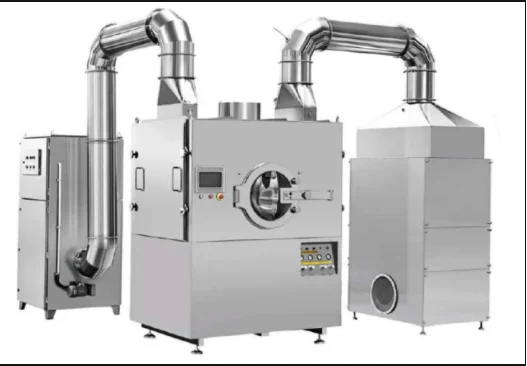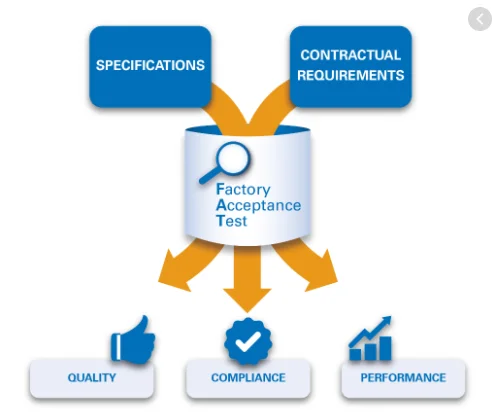OPERATIONAL QUALIFICATIONS OF COMPRESSION MACHINE
TABLE OF CONTENT
- Purpose
- Scope
- Responsibilities
- Procedure
- Operational qualification tests
- Main Panel / Control Panel Testing
- Power & Communication Failure Recovery Verification
- Safety Features Verification
- Variable RPM verification
- Operational Qualification Tests Status
- List of Standard Operating Procedures
- Data Analysis, Summary of OQ & Recommendations
- Amendment record
- Conclusion
- PURPOSE
To describe the Operational Qualification procedure to be used during qualification of B4 Type 35 Station. “B” Tooling Tab, Machine, its accessories and to define the specification of the system in order to:
- ensure that the equipment meets the Operational/Design limits as per user requirements.
- ensure that the equipment will be operationally qualified in accordance with current Good Manufacturing Practices.
- SCOPE
This procedure applies to the Operational qualification of B4 Type 35 Station. “B” Tooling Tab, Machine and its accessories to be installed at Pharmaceutical company.
- RESPONSIBILITIES
- It is the responsibility of the Manufacturer to prepare the Operational qualification protocol.
- It is the responsibility of the client to check and approve the Operational qualification protocol.
- It is the responsibility of the Manufacturer to perform all the tests with respect to Operational qualification and compiling data in co-ordination with client.
- PROCEDURE
The following requirement / practices apply to B4 Type 35 Station. “B” Tooling Tab, Machine Operational Qualification activities:
- To verify the components design parameters.
- Review the preventive maintenance procedures, cleaning procedures and general operational procedure to ensure that they are comprehensive for reliable performance of the equipment.
- OPERATIONAL QUALIFICATION TESTS
The table below lists the tests to be performed as part of the Operational Qualification phase.
| TEST NUMBER | CRITICAL FEATURE |
| 5.1 | Main Panel / Control Panel Testing |
| 5.2 | Power & Communication Failure Recovery Verification |
| 5.3 | Safety Features Verification |
| 5.4 | Variable RPM verification |
Main Panel / Control Panel Testing
5.1.1 Purpose –
To verify that the response of the equipment at the input from various Pushbutton / Switches on control or main panel.
- Test equipment –
None Required.
- Procedure –
- Give inputs from various Push buttons & Switches on Control Panel / Main Panel.
- Acceptance Criteria –
- The equipment will respond as mentioned in the target column of the table given below.
- Take dry run of the equipment to ensure that all controlling parameters &functions are reproducible.
- Test Results
| Input | Target | Actual | Test Done by | Date |
| Main Panels ON/OFF switch switched ON. | Clutch Disengage and main Drive motor STOP push button shall glow up. Counter screen shall start. | |||
| press main drive start push button | Main motor shall start running. drive start push button shall glow up, drive stop push button shall turn OFF and reading on ampere meter shall increase. | |||
| Press clutch engage push button. | Turret shall start rotating. Green push button for clutch shall glow up, red push button for clutch shall turn OFF and reading on ampere meter shall increase. | |||
| Rotate the rotary knob clockwise and anticlockwise. | On rotating knob clockwise turret RPM shall increase and on rotating anticlockwise turret RPM shall decrease. | |||
| Insert the key in lock on screen and turn it to green indicator. | Screen shall display the reading | |||
| Turn the rotary button on screen to RPM mode | Screen shall show the turret RPM | |||
| Turn the rotary button on screen to Count mode | Screen shall display the total tablet count. | |||
| Turn the rotary button on screen to PRODUCT RATE mode | Screen shall display the tablet compressed per min. | |||
| Disengage the clutch by pressing red push button | Turret shall stop rotating. Green push button for clutch shall turn off, red push button for clutch shall glow up and reading on ampere meter shall decrease. | |||
| press main drive stop push button | Main motor shall stop running. drive stop push button shall turn ON, drive start push button shall glow up and reading on ampere meter shall decrease to zero. | |||
| turn Safety Guard Interlock rotary button to Bypass position | Safety Guard Interlock rotary button shall glow up | |||
| turn Safety Guard Interlock rotary button to Interlock Position | Safety Guard Interlock rotary button shall turn OFF |
Conclusion:
PASS FAIL
Checked by: Verified by:
Date: Date:
- Power & Communication Failure Recovery Verification
- Rationale –
To verify that in the event of a power loss or communications failure, the equipment will stop in safe condition.
- Test equipment –
None Required.
- Procedure for Power and Communication Failure Recovery test –
- Operate the equipment in automatic mode or as directed in the User Manual.
- While the equipment is operating, shut down the power to the main control panel. Record if the equipment stops in a safe and secure condition.
- Wait for 5 minutes then restore power to the equipment.
- Check whether system is start running once the power is restored
- The system is not starting of its own, restart the equipment. Record whether the equipment starts normally, and note any adverse condition.
- Acceptance criteria –
- At step 5.2.3.2, the equipment shall stop in safe and secure condition.
- At step 5.2.3.4, the equipment should not start of its own after the power is restored without user permission
- At step 5.2.3.5, the equipment shall restart normally, with no problems or adverse conditions.
- Power and Communication Failure Recovery test results
| Test | Target | Meets Test (Yes / No) | Test Done by | Date |
| Main Power Shut Down | Equipment stops in a safe and secure condition. | |||
| Main Power Restored | Equipment is not starting of its own without user permission | |||
| Equipment can be restarted with NO problems |
|
Conclusion:
PASS FAIL
Checked by: Verified by:
Date: Date:
- Safety Feature Verification
- Purpose –
To avoid damage to the operator or property while operating the equipment.
- Test equipment –
None Required.
- Procedure –
- Operate the equipment as mentioned in the tabular column.
- Acceptance Criteria –
- The equipment shall respond as mentioned in the target column of the table given below.
- Failsafe Results –
| Test | Target | Meets Spec. (Yes / No) |
| Start the machine as per the operational manual and press emergency switch and try to start the machine | Equipment shall not start when emergency switch is pressed and it shall not start until emergency push button is released | |
| Release the Emergency push button and start the machine. | Machine shall start after releasing the Emergency push button. | |
| Turn the safety Guard Interlock rotary button to the INTERLOCK position and open the safety cover. Close the safety door and start the machine. Repeat this for all four doors. | Machine shall stop when safety door is open. Machine shall start when safety door is properly closed |
Conclusion:
PASS FAIL
Checked by: Verified by:
Date: Date:
- Variable RPM verification
- Purpose –
To check the RPM of turret as per RPM observe at the counter screen.
- Test equipment –
Digital Tachometer.
- Procedure –
- Start the equipment as per operational manual.
- observe the RPM of the turret with digital tachometer. Repeat process for three times.
- Rotate the rotary knob to anticlockwise and clockwise and observe the RPM for both side rotations. Repeat process for three times.
- Acceptance Criteria –
- For step 5.4.3.2 the RPM on screen and digital tachometer shall not vary more than 5%.
- For step 5.4.3.2 on anticlockwise rotation of the rotary knob turret RPM shall decrease and on clockwise rotation turret RPM shall increase. Both side average RPM on screen and digital tachometer shall not vary more than 5%.
- Variable RPM verification test results
| RPM Observed on the Counter Screen | Acceptance Criteria | Actual No. of Revolution Observed | Ave. RPM | Meet Spec. (Yes/No) | ||
| Trial-1
| Trial-2
| Trial-3
| ||||
| The average RPM observed at Digital Tachometer shall not vary more than +/- 5% than that of the RPM observed at counter screen. | ||||||
Note:
- a) Enter the no of rotation for ‘1’ minutes in the trial –1, 2 & 3 columns.
- b) Average RPM = (Trial-1 + Trial-2 + Trial-3) / 3
Conclusion:
PASS FAIL
Checked by: Verified by:
Date: Date
- Operational Qualification Tests Status
The table below lists the tests performed and related results.
| Test Number
| Critical Feature
| Pass / Fail | |
| Pass | Fail | ||
| 5.1 | Main Panel / Control Panel Testing | ||
| 5.2 | Power & Communication Failure Recovery Verification | ||
| 5.3 | Safety Features Verification | ||
| 5.4 | Variable RPM verification | ||
- LIST OF STANDARD OPERATING PROCEDURES
| Sr. No. | Description | SOP No. |
| 1 | Operating Procedure of B4 Type 35 Station. “B” Tooling Tab, Machine. | |
| 2 | Cleaning Procedure of B4 Type 35 Station. “B” Tooling Tab, Machine. | |
| 3 | Preventive maintenance of B4 Type 35 Station. “B” Tooling Tab, Machine. |
Data Analysis, Summary of OQ & Recommendations
- AMENDMENT RECORD
| Sr. No. | Item Name | Remarks | Signature & Date |
Note: Any changes made in the system must be recorded in this sheet.
- CONCLUSION
Prepared by Reviewed By Approved by




